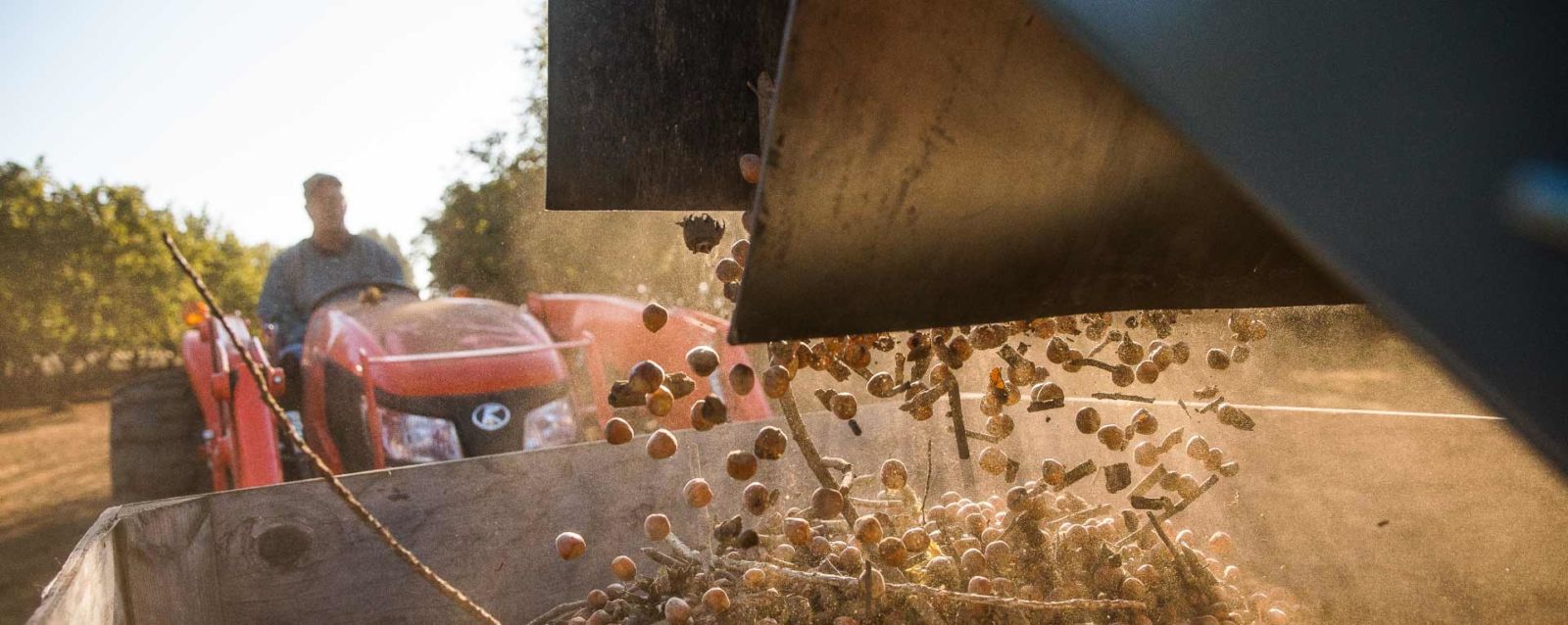Drip Irrigation Opportunities
After looking through several long-term weather forecasts, the consensus seems to be clear. A hot dry summer is coming. Having just gone through a dry season last year, we know that water availability is critical for kernel fill and lowering plant stress, thereby having direct effects on nut yields. Soil moisture monitoring systems are becoming more common as a tool, allowing growers to understand if they are over or under watering. Many of the new probes have connectivity to wireless or cellular networks, allowing continual updates available on your phone. New plantings are often being installed with drip irrigation systems to efficiently and effectively get water to developing root systems in the years that are most critical. Funding may be available from Soil and Water Conservation Districts in your area to convert to drip from other less efficient irrigation methods.
While all types of irrigation are useful for providing the trees the water they need, drip irrigation offers some additional benefits by allowing for fertigation, or the injecting of drip fertilizers. We see a strong response from young trees on a regular fertigation schedule. Most dry fertilizers are applied in just 1 or 2 spring shots, but fertigation is meant to be applied consistently, at low rates, during periods of peak plant growth. An example would be to apply 1 gallon per acre per week from June through early August. While the amount of total nutrient per plant is quite small, directing the nutrient right to the feeder roots allows the effect to be maximized. Drip systems also allow the application of other non-nutrient products:
Kelp can be useful for lowering tree stress, an important consideration in a dry year.
Regalia, a bio-fungicide, has been shown to toughen up the trees and thicken cell walls, helping the tree fight plant disease.
Biological inoculants like Valley Bios flood the root area with beneficial soil organisms to fight soil disease and improve nutrient availability.


